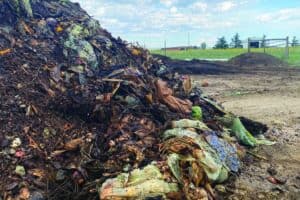Colorado is ìa semi-arid state and water is just as precious as gold,î said Andrea Manuszak, a landscape designer at Corona Designs. Manuszak led the Colorado State University Extensionís Make & Take a Rain Barrel Workshop May 13.As a master gardener with the CSU Extension, Manuszak instructed attendees on how to make rain barrels, and also touched on Coloradoís water law.ìWater rights in this state are very complicated. As soon as the water hits the ground, itís owned by someone, whether it goes into an aquifer or hits the ground on a farm,î Manuszak said.When it passed in 2016, House Bill 16-1005 made it legal for Coloradans to collect rainwater from rooftop downspouts and use it for outdoor purposes, according to ìRainwater Collection in Colorado,î a fact sheet written by P.E. Cabot, C.C. Olson, R.M. Waskom and K.G. Rein, posted to the Colorado State University Extension website.Manuszak said HB 16-1005 allows residents to use rainwater in place of house water in certain cases. However, there are several requisites.The bill limits rain barrel usage to single-family and multi-family complexes with four or fewer units. No more than two rain barrels can be used at each household, and the combined storage of the two rain barrels cannot exceed 110 gallons, according to Section 1 of the bill.The bill also states that rainwater can only be used for outdoor purposes – watering lawns, plants, gardens, etc. – at the household where it was collected, and cannot be used for drinking or other indoor water uses.The bill stipulates that the water must go back into the ground, as it would if rain barrels were not used. Through rainwater collection, ìThe water is still making its way back into the ground the way the rainwater would have. Itís just a delayed process,î Manuszak said.Even with the late 2015 adoption of the Colorado Water plan, the state is still governed by the former appropriation doctrine.ìThis doctrine … controls who uses water, how much water may be used, the types of uses allowed, and when those waters can be used,î according to the FAQ sheet. ìIn our arid environment, every drop counts. … Captured precipitation that is consumed ëout of priorityí may deprive downstream and/or senior water right holders of their right to use water from the natural stream. …Although rainwater collection ìmight only be temporary and minimal, it may still alter the nature of historic flow patterns,î the FAQ sheet states. It is highly controlled to protect senior water rights holders.Rainwater storage itself is not a water right, and the HB 16-1005 includes language that can allow the state engineer to suspend individual rain barrel usage if the senior water rights holders are negatively impacted. Rainwater storage is only legal once all water rights in the basin are satisfied.Because most homeowners wonít know at all times whether all water rights are satisfied, Senate Bill 09-080 and House Bill 09-1129 establish rules for rainwater collection from rooftops of residential dwellings, according to the FAQ sheet.The maintenance of the rain barrels once they are in use is also controlled, Manuszak said.Those who collect the rainwater will be responsible for deterring mosquitoes. ìYou need to empty the barrels once a month to cycle the water through, because you donít want stagnant water,î she said.And while rainwater collection allows Coloradans to safely allocate water in a different way to benefit their homes, it can also ease the strain on the wallet.ìWe know the crisis our water is in,î Manuszak said. ìA lot of us live in areas where using a lot of water can make your water bill go up. Using rainwater to water your vegetable areas, gardens and plants – without using drip irrigation or your own house water – can save you some money, too.îFor more information on the Colorado State University Extension, and for a list of upcoming workshops, visit http://extension.colostate.edu.






